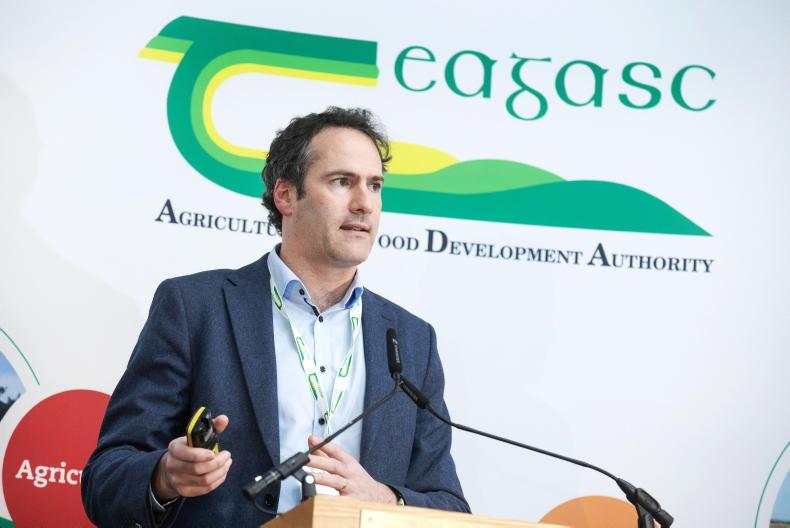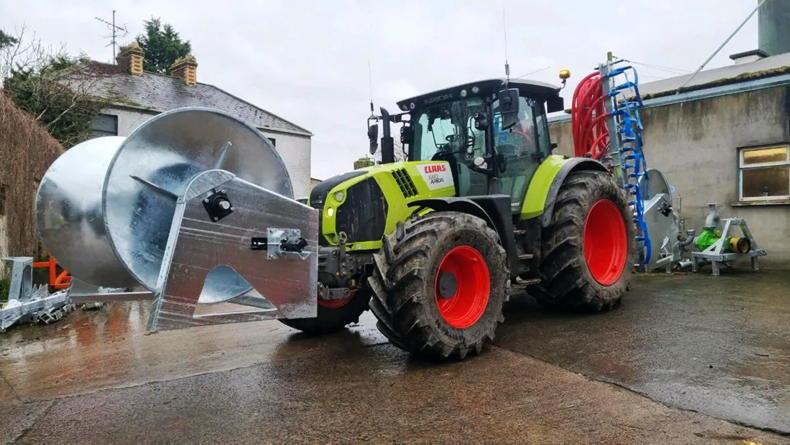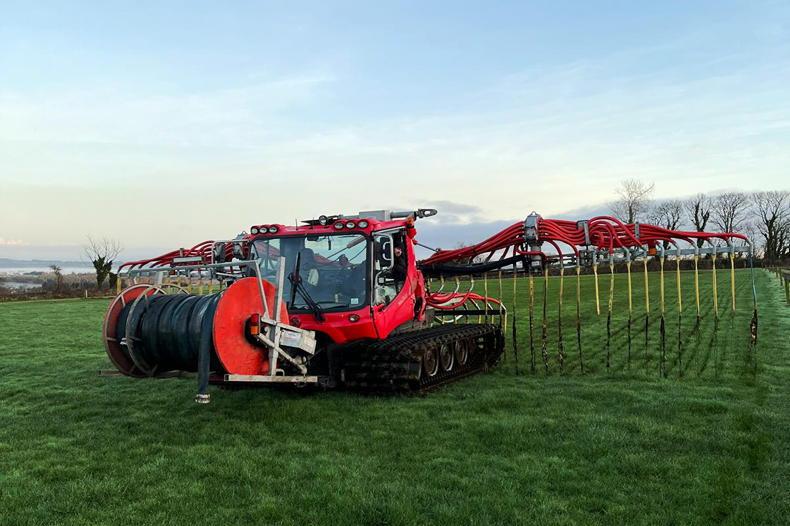“I’m charging for taking in slurries,” according to Tom Barry, Co Cork, at the Teagasc National Tillage Conference on Wednesday 31 January.
He explained that livestock farmers facing issues with the 220kg/ha stocking rate limits need to move slurry off their farm to meet nitrates requirements or else they need to rent land or reduce cow numbers in many cases.
He commented that paying tillage farmers to take in slurry is cheaper than renting land and helps the tillage farmer to cover costs for the contractor and storage tanks.
He has a reception slurry tank which takes in 30 lorry loads of slurry, allows for mixing and a more consistent product, which he applies to growing crops using an umbilical spreading system run by a contractor which costs €150/hour.
Import
Tom said: “We import 90% pig slurries and we import the balance in cattle and dairy slurries.”
Some dairy and cattle slurry comes from neighbouring farms and can be pumped off those farms. Tom has a very good working relationship with these farmers.
He said this allows those farmers to hold on to their cow numbers and provides his farm with fertiliser and organic matter.
Tom uses a hydrometer to test the slurry and everything is entered into his nutrient management plans. Soil samples are taken every year. All of these things add cost, he explained.
Teagasc’s Laurence Shalloo said since the nitrates derogation stocking rate limit has been limited to 220kg/ha, more dairy farmers are open to exporting slurry.
He said dairy farmers need to consider all options, whether it be exporting slurry, reducing crude protein fed to animals or reducing cow numbers, among other options.









SHARING OPTIONS